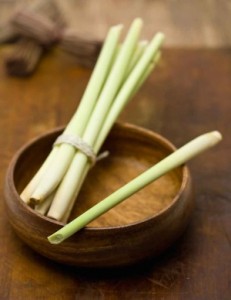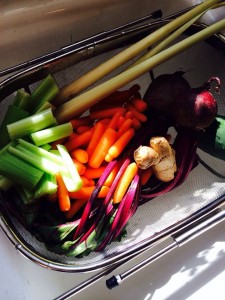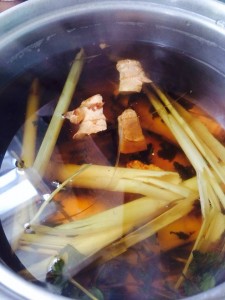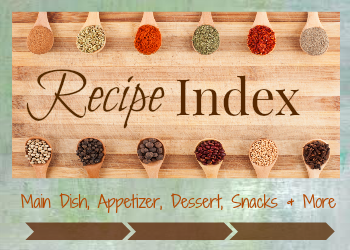 When I began juicing earlier this year, I kept coming across lemongrass as an ingredient in juices and teas. I had no knowledge of lemongrass, its benefits, and/or how to use it. Thus when I saw it on the shelves a Whole Foods Market, I was intrigued enough to buy it. It looked like sugar cane. It smelled like lemons. After purchasing it, I even bit down on the stalky lemongrass—hard like sugar cane. Edible alone!?! No. Therefore my investigative lemongrass homework continued.
When I began juicing earlier this year, I kept coming across lemongrass as an ingredient in juices and teas. I had no knowledge of lemongrass, its benefits, and/or how to use it. Thus when I saw it on the shelves a Whole Foods Market, I was intrigued enough to buy it. It looked like sugar cane. It smelled like lemons. After purchasing it, I even bit down on the stalky lemongrass—hard like sugar cane. Edible alone!?! No. Therefore my investigative lemongrass homework continued.
What is Lemongrass?
Lemongrass is a perennial plant with thin, long leaves and is indigenous to India and other areas of the Asian continent including Cambodia, Indonesia, Malaysia, Thailand and Vietnam. It is also common in Ceylon, Central America, China, Guatemala, India, Java, Madagascar, Sri Lanka, the West Indian islands and Zambia. There are more than fifty varieties of lemongrass but not all are suitable for consumption or medical use. The lemongrass plant usually reaches heights of three feet or one meter and is found mainly in the wild.
Lemongrass has long being used as a flavoring in Asian style cooking. When added to recipes, the citrus-like flavor of the lemongrass herb powder or dried leaf adds a unique element to the meal. Though lemongrass is more widely known for its use as tea, it may be added to curries, beef, fish, poultry, seafood and soups.
 A portion of my lemongrass is being combined with other produce (beets, carrots, cucumber, celery, carrots, ginger) to juice! Then, my second section of lemongrass is going to be boiled with ginger and water for tea consumption.
A portion of my lemongrass is being combined with other produce (beets, carrots, cucumber, celery, carrots, ginger) to juice! Then, my second section of lemongrass is going to be boiled with ginger and water for tea consumption.
My thoughts on lemongrass added to juice—interesting!?! I couldn’t really tell that it was there! I smelled the invigorating lemony smell as it was going through my juicer but when I took a sip, I couldn’t tell there was any lemongrass present!?! I love the touch of lemon to my juices so I added in a lemon for taste! So I’m just hoping the lemongrass is doing it’s magic not that it’s within me!?!
 In an experimental tea, I boiled lemongrass, dried mint leaves, and ginger together on the stove top for about thirty minutes. The infusion of the tri-blend was very aromatic and the perfect blend for drinking with a teaspoon full of honey on a wintry day or iced over for spring/summer.
In an experimental tea, I boiled lemongrass, dried mint leaves, and ginger together on the stove top for about thirty minutes. The infusion of the tri-blend was very aromatic and the perfect blend for drinking with a teaspoon full of honey on a wintry day or iced over for spring/summer.
Lemongrass contains several flavonoids that function as antioxidants and anti-inflammatory agents. In their antioxidant capacity, flavonoids prevent damage to cells that can lead to long-term diseases!
Drink up or spice up your meals/juices/teas with lemongrass and enjoy the many benefits!
Photo Credit & Lemongrass Information Credit Link
Latest posts by Litsa @How to Have it All (see all)
- Mushrooms: Portobello, Morels, & More - April 25, 2016
- Giving Back: Get Involved - December 2, 2015
- The Autumn Advantage - December 1, 2015






